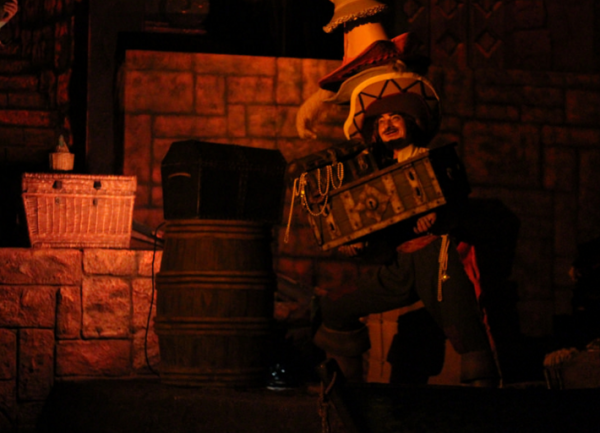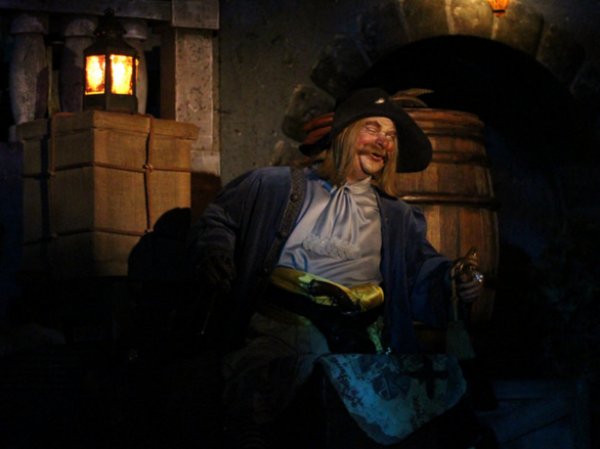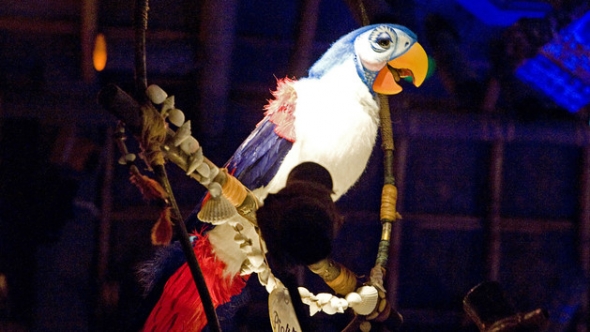A pirate’s life for me?
Imagineers planned to recreate a pirate world befitting Stevenson’s writing. The wax statues would celebrate the history of pirates, recreating their appearances in amazing detail. Guests at Disneyland would walk from scene to scene within the museum, with parents teaching children about a critical part of American history and folklore.
Alas, a couple of problems existed. An accurate depiction of pirates proved problematic for a theme park focused on family. Pirates were by nature treacherous scum, criminals of the highest order. While pop culture romanticized the life of nautical treasure hunters, they weren’t good people. To wit, many of them died of venereal diseases that they received from…well, it’s best not to speculate. We probably shouldn’t speculate as to how and why Blackbeard came to be married 14 times. It’s not a happy tale for many of the families of the first 13 brides.
The numbers game
How could a family-friendly theme park tell a story about such men without horrifying children (or their parents)? Even if Disney solved that problem, a second one existed that eventually proved too large a hurdle to overcome. Theme park tourists walking through a wax museum don’t move uniformly. Some people rush through exhibits while others take their time, lingering to savor every detail. Disney would struggle to maintain a steady flow of traffic in a wax museum.
Also, even if the company’s cast members offered some sort of live show in each room, they couldn’t guarantee all guests the same experience. Some would have a better view than others. Also, anyone who missed something they deemed important would want to stay behind to watch the next show. Park planners couldn’t guarantee any consistency in terms of attraction throughput.
By Disney’s best calculations, a wax museum would only deliver throughput of 500 guests per hour, a laughably small amount for Disneyland. During 1960, the park claimed its 20 millionth guest, and they were averaging approximately five million visits a year by that point. That is more than 13,000 guests a day. The wax museums they planned could only service less than half the people attending. Imagineers accepted that their current plan for a pirate museum wasn’t feasible.
You bought me a birdcage? Umm, thanks, I guess.
Image: Disney
The answer to Disney’s problem actually presented itself a few years before Imagineers had even pitched Pirates of the Caribbean. During the early 1950s, a Disney electrician named Lee Adams received an unusual gift. His boss, Walt Disney, walked into his office and handed the befuddled man a birdcage. Inside this metal device was a bird, and it could sing. While this notion doesn’t sound the least bit impressive today, it was the equivalent of handing a caveman the wheel at the time. What’s odd is that the toy itself dated back almost one hundred years. Nobody had ever successfully advanced the technology in the century that followed, though.
Disney delivered a directive to his employee. The man was to understand the machinations of the system and improve it. Uncle Walt wanted a better singing bird. As innocent as this anecdote sounds, it was one of the signature moments in the history of the entire theme park industry.
Let’s take a moment to appreciate how Walt Disney’s mind worked. In a way, he was the original innovator in the field of artificial intelligence, only without much of the intelligence. He loved the process of creating something entirely new out of thin air. He predicated his entire career on imbuing inanimate objects with lifelike behaviors. Even the terminology used to describe his movies punctuates this point. They’re animated movies, after all.
Disney and his staff performed the animation by bringing pictures to life simply by drawing enough cells to tell the story. Every single illustration was dead on its own. In combination, they evolved into vibrant fairy tales.
The Hollywood legend’s natural curiosity played in his favor while window shopping in New Orleans. Where most people would have seen a silly, noisy toy that would probably get old quick, Disney envisioned artistic advances of a historic nature. While constructing his theme park, he always explored new technological advances that would aid him in his ultimate goal: bringing inanimate objects closer to life. This silly singing bird offered the process of a better tomorrow.




Add new comment